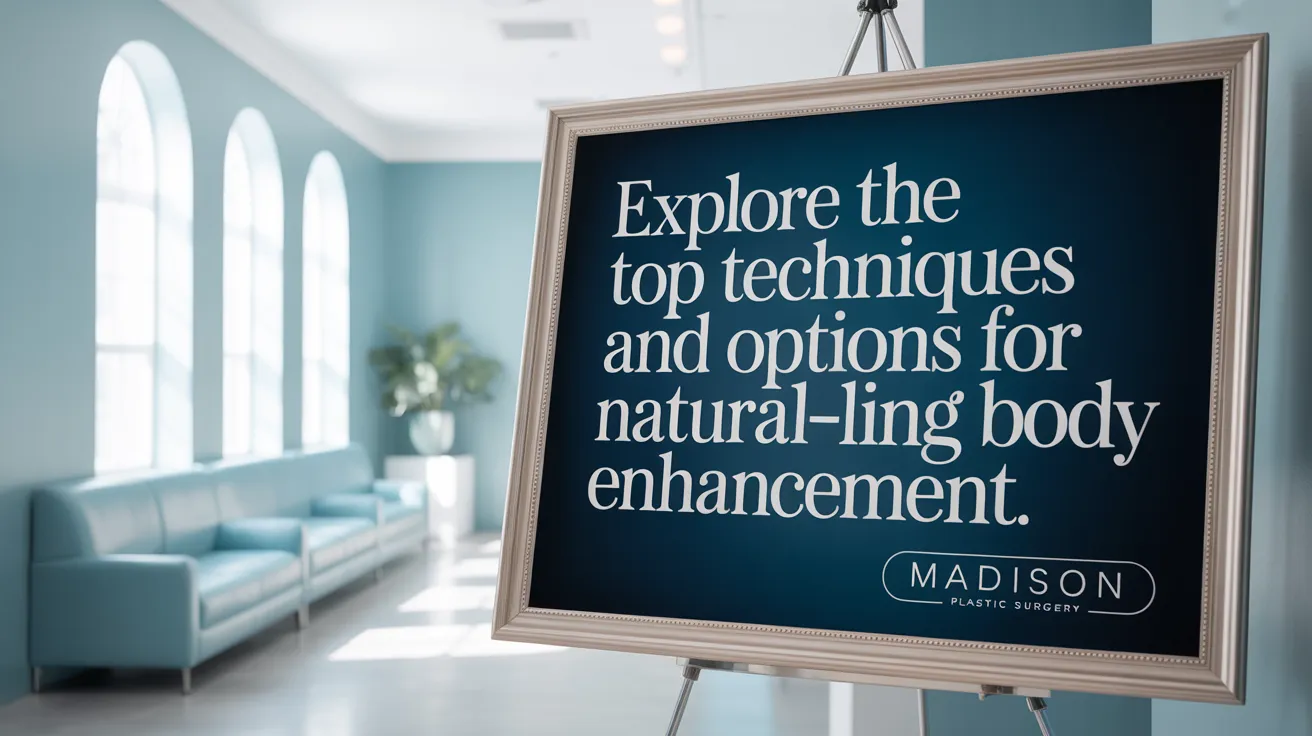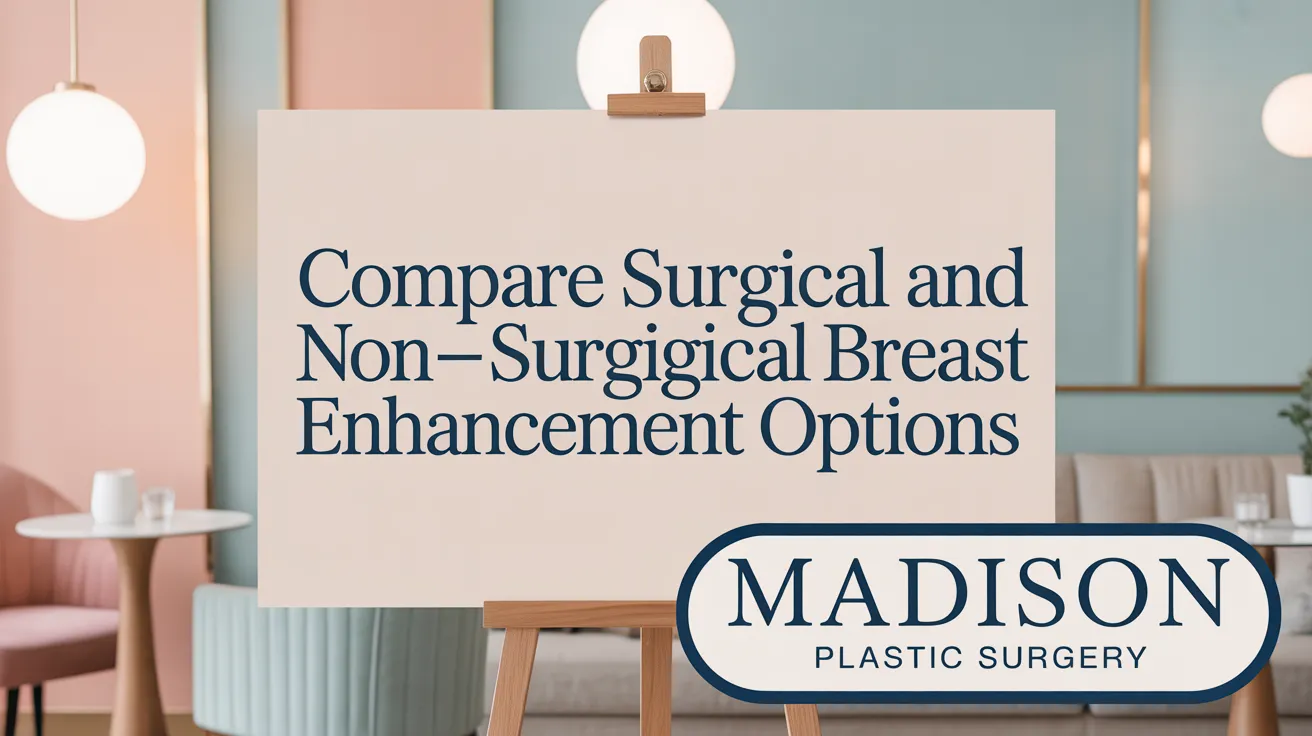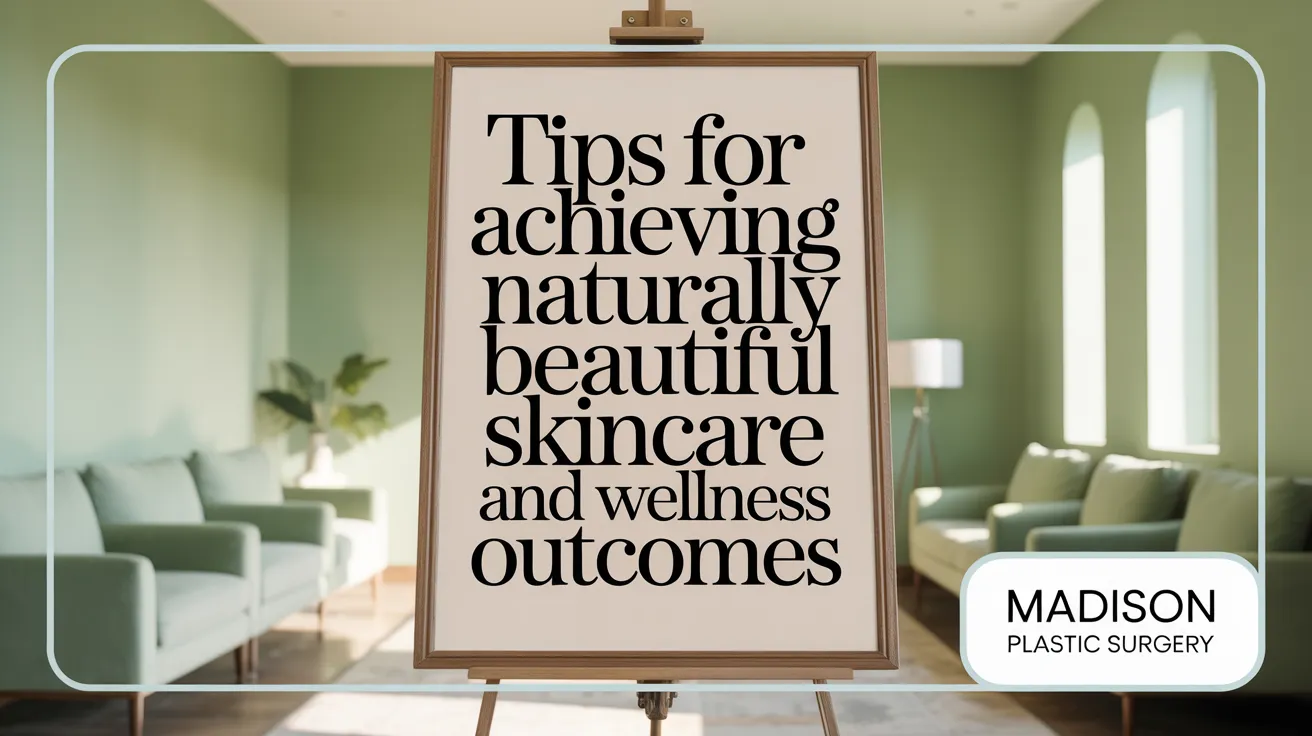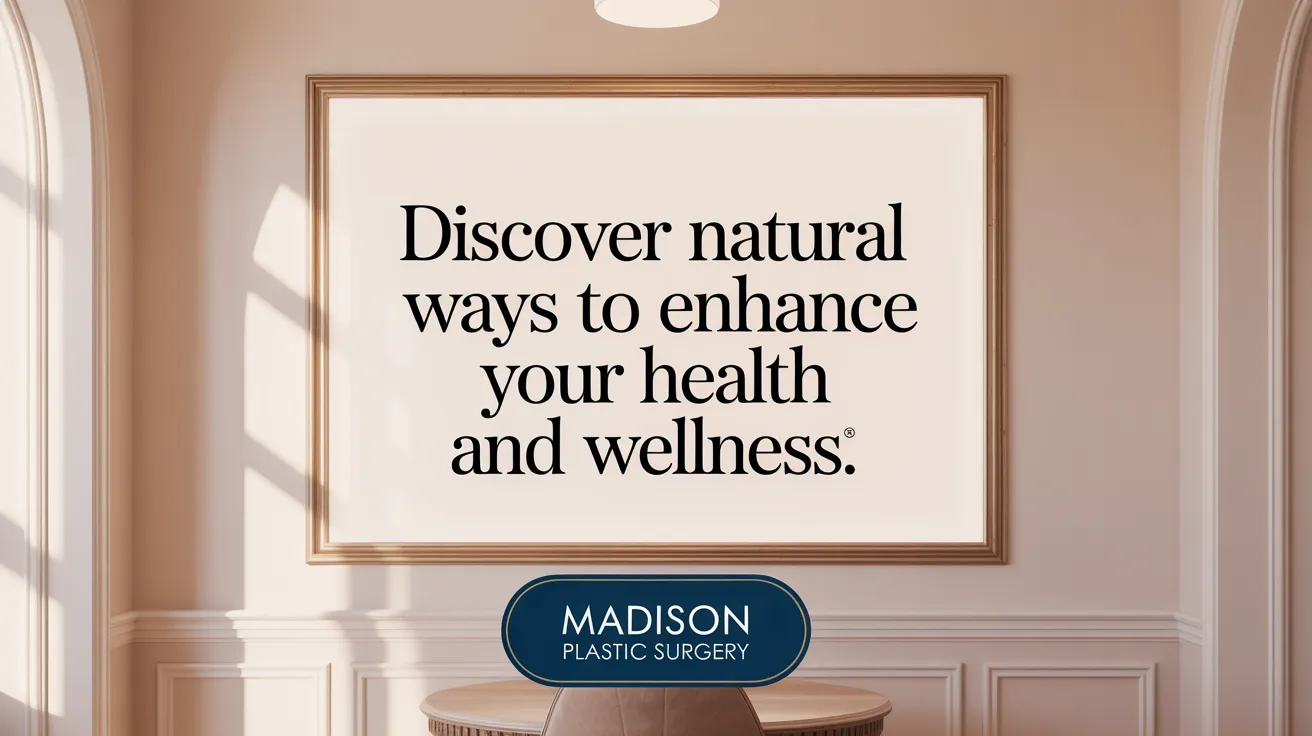Understanding Natural-Looking Breast Enhancement
Natural-looking breast enhancement has become a popular goal for many seeking to improve their silhouette while maintaining authenticity. This article explores surgical and non-surgical options, examines safety and efficacy, and discusses natural methods and the latest innovations to help you make informed choices tailored to your body and lifestyle.
Overview of Natural-Looking Breast Enhancement Options and Techniques
 When considering how to achieve a natural appearance in breast augmentation, several options and techniques are available that focus on harmony with individual body characteristics. The choice of implant type is central to this aim. Silicone breast implants are highly favored for their ability to mimic the softness and mobility of natural breast tissue. Cohesive gel implants, often called "gummy bear" implants, provide a similar natural feel with added shape stability, making them a popular choice for those seeking a more realistic result.
When considering how to achieve a natural appearance in breast augmentation, several options and techniques are available that focus on harmony with individual body characteristics. The choice of implant type is central to this aim. Silicone breast implants are highly favored for their ability to mimic the softness and mobility of natural breast tissue. Cohesive gel implants, often called "gummy bear" implants, provide a similar natural feel with added shape stability, making them a popular choice for those seeking a more realistic result.
Implant shape also plays a vital role. Round breast implants can offer fullness and projection, particularly in the upper pole of the breast, but anatomical or teardrop-shaped implants better replicate the natural slope of the breast and are often preferred for a subtler, more authentic look. The profile of the implant—low, moderate, or high—further influences the final aesthetic. Moderate profiles tend to balance projection with natural flow, making them ideal for many body types.
Placement options include submuscular (beneath the chest muscle) and subglandular (above the muscle). Submuscular placement typically provides a softer appearance and reduces visibility of implant edges or ripples, especially in women with less natural tissue. Conversely, subglandular placement can give a more prominent projection with quicker recovery and is suited to women with adequate tissue cover.
An increasingly popular natural alternative to implants is fat transfer breast augmentation. This technique involves liposuction of fat from other body areas such as the abdomen, hips, or thighs, followed by carefully injecting the purified fat into the breasts. It offers a true natural feel and aesthetic, especially for modest size increases or symmetry corrections.
Ultimately, achieving natural-looking results demands a personalized approach. Factors such as individual proportions, tissue quality, and aesthetic goals must be carefully evaluated. Consulting with an experienced plastic surgeon ensures the right combination of implant type, shape, placement, and the possible integration of fat transfer, all tailored to produce results that are harmonious with the patient’s overall body profile and desired outcome.
Surgical and Non-Surgical Breast Augmentation Procedures: Implants, Fat Transfer, and Alternatives
 Breast augmentation offers a variety of options to enhance size and shape, tailored to individual preferences and body types. Surgical methods include the placement of silicone breast implants and saline breast implants, both of which provide significant volume increases and are inserted through different incision sites such as the inframammary incision(under the breast), peri-areolar incision (around the areola), or transaxillary incision (through the armpit). Silicone implants are popular for their natural feel, thanks to their cohesive gel that closely mimics real tissue, while saline implants are filled with sterile saltwater, offering the advantage of smaller incisions and the safety of saline being absorbed if rupture occurs.
Breast augmentation offers a variety of options to enhance size and shape, tailored to individual preferences and body types. Surgical methods include the placement of silicone breast implants and saline breast implants, both of which provide significant volume increases and are inserted through different incision sites such as the inframammary incision(under the breast), peri-areolar incision (around the areola), or transaxillary incision (through the armpit). Silicone implants are popular for their natural feel, thanks to their cohesive gel that closely mimics real tissue, while saline implants are filled with sterile saltwater, offering the advantage of smaller incisions and the safety of saline being absorbed if rupture occurs.
A less invasive alternative is fat transfer breast augmentation, also known as autologous fat grafting. This procedure involves liposuction to harvest fat from areas like the abdomen, hips, or thighs. The fat is then purified and carefully injected into the breasts to subtly increase volume, providing a soft, natural sensation and appearance. Fat transfer is especially appealing to those seeking modest enhancement without artificial implants, and it offers the added benefit of body contouring at the donor site.
In some cases, combining fat transfer with traditional implant procedures can yield more natural results. The fat helps to soften the contours and reduce the risk of rippling, providing an overall more harmonious look. While fat grafting is effective for subtle improvements, it has limitations in achieving large size increases and may require multiple sessions for optimal results.
Beyond implants and fat transfer, non-surgical methods such as external vacuum devices or injections of platelet-rich plasma (PRP) (Vampire breast lift) are available, but these typically offer only minimal and temporary improvements. They are often suitable for individuals who desire slight enhancements or wish to avoid surgery altogether. Overall, the choice of procedure depends on personal goals, anatomy, and medical advice from a qualified plastic surgeon, who can recommend the most suitable and safe approach to achieve desired, natural-looking results.
Safety, Efficacy, Benefits, and Risks of Breast Enhancement Procedures
 Breast enhancement procedures, including implants and fat transfer, are generally considered safe when performed using FDA-approved devices and by experienced, qualified surgeons. The most common types of implants—silicone gel, saline, and gummy bear—each have specific safety profiles. Modern silicone implants are valued for their natural feel and appearance, with cohesive gels that resemble natural tissue. Regular monitoring is necessary to check for potential ruptures or silicone leakage. Saline implants offer the advantage of adjustability during surgery and are safely absorbed if they leak, but may feel firmer and have a higher likelihood of rippling.
Breast enhancement procedures, including implants and fat transfer, are generally considered safe when performed using FDA-approved devices and by experienced, qualified surgeons. The most common types of implants—silicone gel, saline, and gummy bear—each have specific safety profiles. Modern silicone implants are valued for their natural feel and appearance, with cohesive gels that resemble natural tissue. Regular monitoring is necessary to check for potential ruptures or silicone leakage. Saline implants offer the advantage of adjustability during surgery and are safely absorbed if they leak, but may feel firmer and have a higher likelihood of rippling.
Potential complications include capsular contracture, where scar tissue tightens around the implant, causing firmness or distortion. Implant rupture, although less common with current technology, can lead to leakage and may require surgical removal or replacement. Risks such as infection, changes in nipple sensation, and rare cancers like breast implant-associated anaplastic large cell lymphoma (BIA-ALCL) are also associated with implants.
Fat transfer breast augmentation uses the patient's own fat from areas like the abdomen or thighs. It provides a natural look and feel, especially for modest volume increases. However, it carries risks such as uneven fat survival, the need for multiple sessions, and possible cyst formation or calcifications, which can affect mammogram readings. Long-term results are generally durable, but some loss of volume over time is possible.
A crucial concern for some women is breast implant illness (BII), a term used for systemic symptoms like fatigue, pain, and autoimmune-like effects allegedly linked to implants. While scientific consensus is still evolving, ongoing studies investigate these associations.
The importance of consulting with a qualified, board-certified plastic surgeon cannot be overstated. An experienced surgeon assesses individual anatomy, discusses expectations, and recommends the most suitable procedure—be it a traditional implant, fat transfer, or combined approaches. Proper surgical technique and diligent post-operative monitoring are vital to minimize complications and achieve natural-looking, satisfying results.
In summary, while breast enhancement procedures can offer significant aesthetic and psychological benefits, they involve risks that must be carefully considered. Advances in technology and surgical methods continue to improve safety profiles, but ongoing research is essential to understand long-term health impacts fully.
Achieving Natural Results: Implant Choices, Placement, and Surgical Techniques
 Selecting the right implant size, shape, and profile is essential for achieving a natural-looking breast augmentation. Silicone breast implants gel and highly cohesive "gummy bear" implants are popular choices due to their ability to mimic the texture and movement of natural breast tissue. Shape options include round breast implants and teardrop anatomical implants, with teardrop implants often preferred for a more natural slope.
Selecting the right implant size, shape, and profile is essential for achieving a natural-looking breast augmentation. Silicone breast implants gel and highly cohesive "gummy bear" implants are popular choices due to their ability to mimic the texture and movement of natural breast tissue. Shape options include round breast implants and teardrop anatomical implants, with teardrop implants often preferred for a more natural slope.
Implant placement significantly impacts the natural appearance. Submuscular (under-muscle implant placement) (beneath the chest muscle) placement tends to create a softer, more natural contour by providing greater coverage and reducing rippling, especially in women with less natural tissue. Conversely, subglandular (over-muscle implant placement) placement offers a more projected look but may show contours more clearly.
The choice of surgical incision also influences scarring and access. The inframammary incision (under the breast) is most common, providing good visibility and minimal scarring. Alternatives like peri-areolar incision or trans-axillary incision are used based on individual anatomy and surgeon preference, aiming to conceal scars.
Advanced implant technology enhances natural results. Surfaces like textured or smoothSilk® reduce complications and improve feel, while variations in implant size range and implant profile options allow customization to match the patient’s body frame.
Postoperative care procedures, including gentle massage, wearing support garments, and maintaining proper positioning, are vital for sustaining the natural look. Following these tailored techniques helps ensure the enhancement appears harmonious, subtle, and aligned with natural anatomy.
Exploring Natural Methods: Exercises, Diet, Herbs, and Lifestyle Modifications

What natural methods exist for breast enhancement, such as exercises, diet, herbal supplements, massages, and lifestyle modifications?
Natural approaches to improving breast appearance focus on enhancing the underlying tissues and muscles rather than directly increasing breast tissue volume. Regular targeted exercises, such as push-ups, dumbbell presses, and chest flys, can strengthen the pectoral muscles underneath the breasts. This strengthening can lead to a lifted and firmer look, creating the illusion of fuller breasts.
Diet plays a supportive role; incorporating foods rich in phytoestrogens like soy products, flaxseeds, chickpeas, and whole grains may support hormone balance and tissue health. Consuming healthy fats, proteins, and nutrients essential for skin and tissue integrity can further contribute to overall breast health. Although diet alone cannot cause significant breast growth, it supports the body's natural tissue maintenance (foods that increase breast size naturally).
Herbal supplements such as fenugreek, fennel, saw palmetto, wild yam, and red clover have traditionally been used to promote breast tissue development through their phytoestrogen content. These herbs are believed to influence hormonal activity, potentially encouraging growth. However, scientific evidence supporting their effectiveness remains limited, and caution is advised (holistic way to enhance breast size).
Gentle breast massage using natural oils like olive oil, flaxseed oil, or herbal-infused creams may improve blood circulation and support skin elasticity. Proper massage techniques can temporarily enhance shape and firmness but are unlikely to lead to measurable size increases (natural breast enlargement treatments).
Lifestyle choices, including maintaining a healthy weight, avoiding smoking, and wearing properly fitted bras, can optimize breast appearance. Healthy habits promote skin elasticity and prevent sagging, complementing other natural methods (natural remedies for breast size).
In summary, while natural methods such as exercises, diet, herbal supplements, massages, and healthy lifestyle modifications can support overall breast health and enhance their appearance modestly, they are unlikely to produce dramatic size increases. Consulting healthcare professionals before starting any herbal or supplement regimen is crucial to ensure safety and suitability (consulting healthcare professionals for breast enhancement).
Evaluating Herbal and Topical Breast Enhancement Products: Effectiveness and Safety
 There is limited scientific evidence supporting the effectiveness of herbal and natural remedies for breast enhancement, and most claims are not backed by rigorous clinical trials. Common ingredients such as saw palmetto, wild yam, fenugreek, and fennel are used based on traditional beliefs, but they have not been proven to promote significant breast growth. Many non-surgical methods, including supplements, creams, and massage, may improve breast appearance temporarily or support overall breast health, but are unlikely to cause substantial size increases.
There is limited scientific evidence supporting the effectiveness of herbal and natural remedies for breast enhancement, and most claims are not backed by rigorous clinical trials. Common ingredients such as saw palmetto, wild yam, fenugreek, and fennel are used based on traditional beliefs, but they have not been proven to promote significant breast growth. Many non-surgical methods, including supplements, creams, and massage, may improve breast appearance temporarily or support overall breast health, but are unlikely to cause substantial size increases.
Herbal ingredients like dong quai, red clover, hop flowers, and pueraria mirifica are believed to contain phytoestrogens that can influence hormonal activity and potentially support breast tissue development. However, the scientific community remains skeptical of these claims, as robust clinical trials demonstrating their efficacy are lacking.
Safety concerns are also relevant. Some herbs, such as kava, have known adverse effects like hepatotoxicity, while others, including dong quai, can increase bleeding risk, especially if combined with anticoagulants. Interactions with medications, especially blood thinners, can pose health risks.
Topical creams and lotions marketed for breast enhancement often contain plant extracts, vitamins, and collagen. While some users report temporary improvements in skin firmness or fullness, these products generally do not result in significant, lasting size increases. Their effectiveness depends heavily on individual response and application consistency. Examples of such products include bust firming creams and gels with plant-based ingredients designed to promote fuller breast appearance.
For consumers, the best guidance is to approach herbal and topical products with caution. Since scientific validation is lacking, it is important to consult healthcare professionals before use. Relying on proven surgical procedures, such as breast implants or fat transfer, remains the most effective method for permanent breast size enhancement. As research continues, more conclusive evidence may emerge, but currently, herbal and topical remedies should be considered supportive rather than transformative.
More information and scientific studies on herbal breast enhancement can be found through searches like "scientific research on herbal breast enhancement supplements".
Latest Innovations and Expert Insights in Natural Breast Enhancement
 Recent advances in breast enhancement techniques are shifting toward minimally invasive procedures that prioritize natural appearance and patient safety.
Recent advances in breast enhancement techniques are shifting toward minimally invasive procedures that prioritize natural appearance and patient safety.
Emerging approaches like endoscopic breast augmentation utilize small incisions and cameras to place implants with minimal scarring. These techniques allow precise control and can reduce recovery times.
Stem cell therapy and fat grafting continue to evolve, offering options that promote natural tissue growth. Stem cell-based methods aim to harness the body's regenerative abilities, encouraging soft tissue regeneration for a more authentic feel.
Hybrid solutions, combining traditional implants with autologous fat transfer, provide customized results, allowing patients to benefit from the safety of implants and the natural look of fat grafting.
Innovative imaging technologies such as 3D simulation and virtual reality enable surgeons and patients to visualize outcomes pre-operatively, ensuring better matching of expectations. These tools assist in selecting appropriate implant sizes, shapes, and positions.
Scarless breast lifts and minimally invasive skin tightening procedures like radiofrequency-based skin contraction or threadlifting offer non-surgical options for improving breast contour and firmness.
Advancements in implant design, such as gummy bear cohesive gels and structured implants like Motiva® and IDEAL®, provide improved safety profiles, shape retention, and a natural feel, further enhancing aesthetic outcomes.
Experts highlight that personalized approaches—tailoring the choice of techniques to individual anatomy and goals—are essential for achieving authentic results. Patients report high satisfaction with these innovations, noting outcomes that closely resemble natural breasts.
As research progresses, future trends include 3D-printed custom implants, stem cell therapies, and non-invasive energy-based devices, all aiming to deliver safer, more natural, and long-lasting breast enhancement results.
Making Informed Decisions for Natural Breast Enhancement
Achieving natural-looking breast enhancement requires a comprehensive understanding of available surgical and non-surgical options, benefits, risks, and realistic expectations. Modern techniques, from carefully selected implants and fat transfer procedures to supportive natural methods, offer individualized solutions tailored to diverse needs. While natural remedies and topical products have limited scientific support, advancements in technology continue to provide safer, more effective, and less invasive options. Consulting qualified plastic surgeons and healthcare professionals remains essential to ensure safety, satisfaction, and results that harmonize with one’s body and lifestyle for lasting confidence and well-being.
